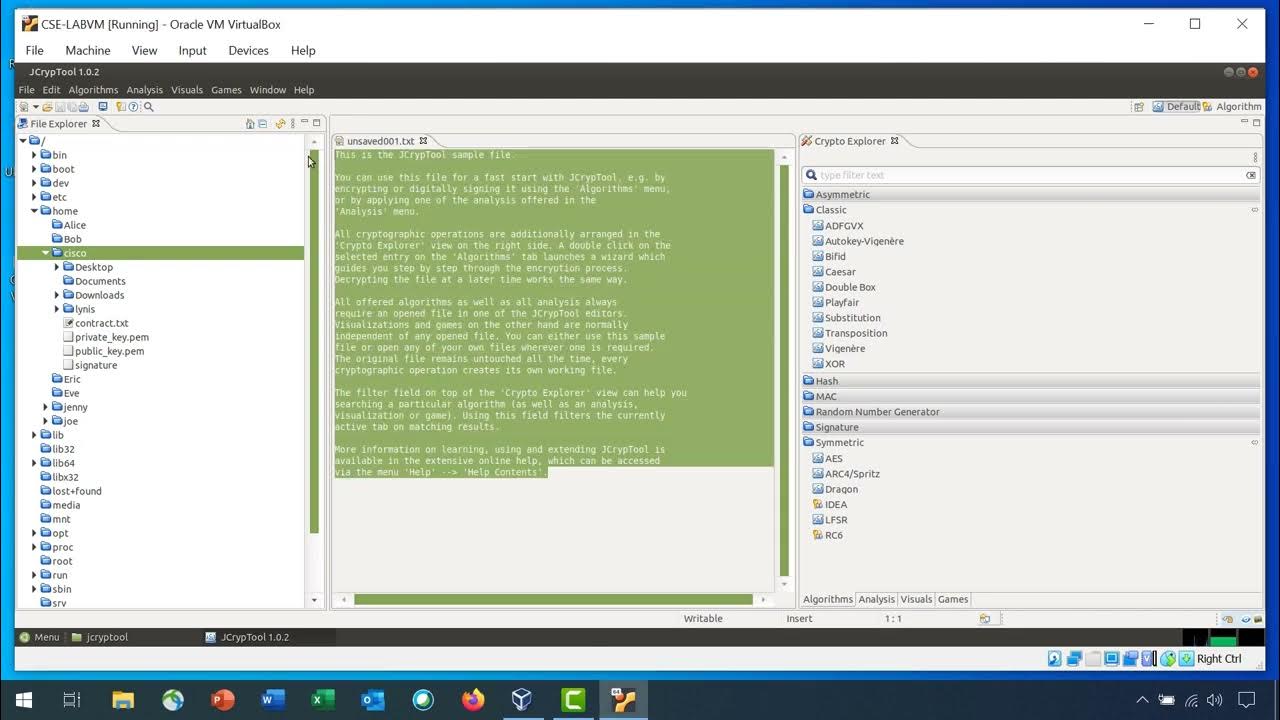AES and DES Algorithm Explained | Difference between AES and DES | Network Security | Simplilearn
Summary
TLDRThis script delves into the realm of cryptography, emphasizing the evolution from DES to AES. It explains DES's foundational role and its limitations, leading to the development of the more secure AES algorithm. The script explores the technicalities of both algorithms, their modes of operation, and applications in securing data transmission. It highlights the importance of encryption in safeguarding sensitive information and the continuous advancement in cryptographic standards to meet modern security demands.
Takeaways
- 🔒 **Encryption Importance**: Storing data in plain text is a significant risk; encryption is crucial for secure data transmission.
- 🔐 **Historical Algorithms**: DES and AES are prominent encryption algorithms that have been widely used since the 1970s.
- 🔑 **DES Algorithm**: Data Encryption Standard (DES) is a symmetric key cipher that encrypts data in 64-bit blocks using 48-bit keys.
- 🔄 **DES Structure**: DES is based on the Feistel cipher structure, which involves multiple rounds of substitution and permutation.
- 📉 **DES Vulnerability**: DES's 56-bit key size became insecure with the advancement of computing power, leading to its deprecation.
- 🔄 **Triple DES**: An enhancement of DES, Triple DES (3DES) uses three keys for encryption but was deemed too slow for modern needs.
- 🏆 **AES Development**: Advanced Encryption Standard (AES) was developed as a successor to DES, offering a more secure and efficient alternative.
- 🔑 **AES Key Sizes**: AES supports larger key sizes of 128, 192, or 256 bits, enhancing security against brute force attacks.
- 🔍 **AES Features**: AES uses a Substitution-Permutation Network (SPN) with different numbers of rounds based on key size, adding complexity and security.
- 🌐 **AES Applications**: AES is extensively used in various fields, including wireless security (WPA, WPA2), SSL/TLS encryption, and file encryption.
- 🛡️ **AES Advantages**: AES offers several advantages over DES, such as larger block size, variable number of encryption rounds, and higher encryption and decryption speeds.
Q & A
Why is storing data in plain text considered a significant risk for organizations?
-Storing data in plain text is a significant risk because it makes the data vulnerable to unauthorized access and potential breaches, highlighting the importance of security in data transmission.
What is the Data Encryption Standard (DES) algorithm and how does it work?
-The Data Encryption Standard (DES) is a symmetric key cipher used to encrypt and decrypt information in blocks. It converts plain text into ciphertext using 48-bit keys and follows the Feistel cipher structure, which involves a series of substitution and permutation operations.
How did the DES algorithm originate and what was its historical significance?
-DES originated from the Lucifer block cipher developed by IBM cryptography researcher Horst Feistel in 1971. It was approved as a federal encryption standard in 1976 and was widely used until it was cracked and deemed insecure, leading to the development of the Triple DES.
What is the Triple DES algorithm and why was it developed?
-Triple DES is a symmetric key block cipher that uses a double DES cipher with three keys, encrypting the data three times to enhance security. It was developed as a response to the DES being cracked, but it was deemed too slow for fast communication needs.
What is the Advanced Encryption Standard (AES) and why was it necessary?
-The Advanced Encryption Standard (AES), also known as the Rijndael algorithm, is a symmetric block cipher that replaced DES due to its larger key size and more complex structure, providing stronger security against brute force attacks.
How does the AES algorithm differ from the DES algorithm in terms of key length and block size?
-AES differs from DES by offering larger key lengths of 128, 192, or 256 bits and a block size of 128 bits, compared to DES's 48-bit keys and 64-bit block size, providing enhanced security.
What are the different modes of operation for the DES algorithm?
-DES has five modes of operation: Electronic Codebook (ECB), Cipher Block Chaining (CBC), Cipher Feedback (CFB), Output Feedback (OFB), and Counter (CTR). Each mode provides a different method of encrypting data based on the requirements.
How does the AES algorithm's structure contribute to its security?
-AES's structure, which includes a Substitution-Permutation (SP) network and multiple rounds of processing, contributes to its security by making it resistant to various cryptanalytic attacks and providing a high level of complexity.
What are some practical applications of the AES algorithm in today's IT sphere?
-AES is widely used in wireless security protocols like WPA and WPA2, SSL/TLS encryption for secure web browsing, file encryption for sensitive documents and media, and processor security in hardware appliances.
How does the AES algorithm handle the encryption and decryption process?
-AES handles encryption and decryption through a series of steps including key expansion, SubBytes, ShiftRows, MixColumns, and AddRoundKey, which are repeated for a number of rounds depending on the key size. The process is reversed for decryption.
Outlines

此内容仅限付费用户访问。 请升级后访问。
立即升级Mindmap

此内容仅限付费用户访问。 请升级后访问。
立即升级Keywords

此内容仅限付费用户访问。 请升级后访问。
立即升级Highlights

此内容仅限付费用户访问。 请升级后访问。
立即升级Transcripts

此内容仅限付费用户访问。 请升级后访问。
立即升级5.0 / 5 (0 votes)






